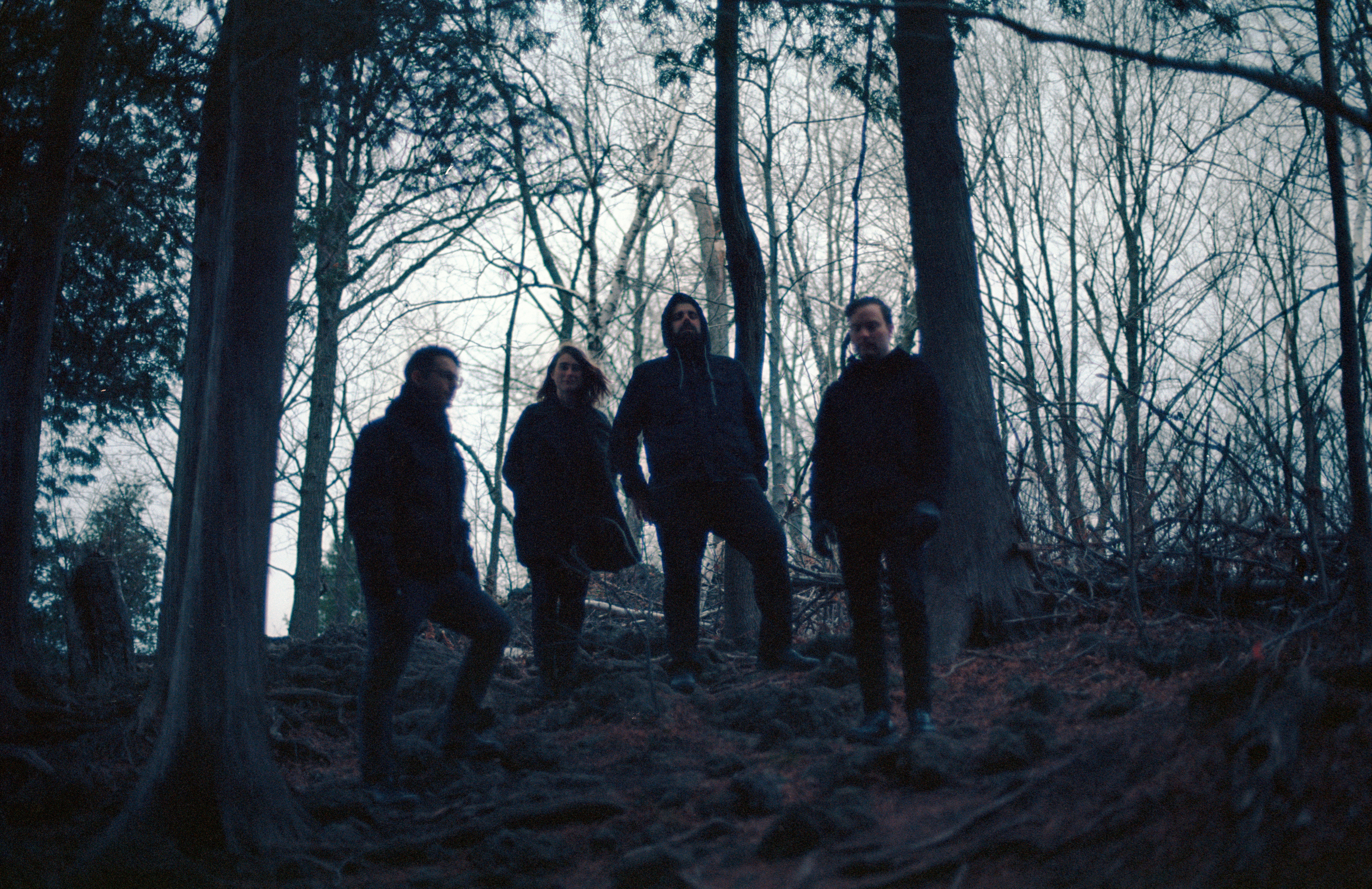Interview: Century Palm ready to take on the capital

Photo: Rico Moran
Century Palm will take you on a time warp and are happen to be swinging into town this week.
Century Palm was initially formed by vocalist/guitarist Andrew Payne in 2014 following the dissolution of garage-rock cult favourites, Ketamines. Ketamines featured 3/4ths of the eventual members of Century Palm (Paul Lawton, Penny Clark, Jesse Locke and Payne). Members also play(ed) in Tough Age, Zebrassieres and Dirty Beaches. Needless to say this talented group has a pretty impressive resume.
The band has certainly moved well beyond the garage sound of their past bands. Century Palm will take you back 20 or 30 years with new wave and post-punk musical styling that many like me have missed dearly.
Ahead of their show at House of Targ Saturday night, we chatted with the band about their evolution from Ketamines to Century Palm and their retro sound. Have a read below and travel back in time Saturday night (info here).
Beyond the different sound, what is the major difference between Ketamines and Century Palm?
Paul Lawton: Ketamines was a studio project with a rotating cast of players, Century Palm has always felt more like a hard-slogging band. Ketamines as a collab between myself and James Leroy, who I had been making music with since the 90s. Century Palm is (more or less) more of a collaboration between an entire band, it is a great deal more collaborative than Ketamines ever was.
Andrew Payne: Although I played in Ketamines for a year I didn’t write any music for the band. For me, Century Palm is a continuation of my last songwriting project, Zebrassieres, which was based in Ottawa when I lived there from 2009 to 2012. The main goal of Zebrassieres was to make people question the need to be serious, logical and mature. With Century Palm, I’m taking a stab at being serious, logical and mature. Both paths are valid ways to approach life.
Often when bands breakup, they get back together for high paying reunion gigs, not form another band with many of the same members. What brought you together to make music again?
Paul: I think that Ketamines might come back around at some point. It’s confusing – the version of Ketamines with myself, Andrew, Jesse and Alex dissolved after a stupid and highly charged cross Canada tour where we were doing Ketamines AND Zebrassieres with the same lineup. Andrew basically quit on a 30 hour drive home from Chicago to Toronto, I think that tour kind of broke us. Ketamines went on with Jesse on drums, and then Andrew formed Century Palm, and we basically all got back together again, without me as the ruthless uncaring leader, and it was instantly kind of better.
Andrew: The people are all great, I just wanted to make my own music and do something different than before.
Getting back to the sound, Century Palm sounds like something from the last century, more of a late 70s and 80s vibe to it. How did that come to be?
Andrew: I like the sweet spot in there when punk-influenced-bands were getting more creative, and right before a lot of those same bands started losing their edge. It was a time when everything was more bold, dark and stylish than the present. The fashion was distinctive and daring. The movies were full of slime, and actors would say, “Shut up, pukoid.”
Paul: I think we are victims of “overdocumentation” as Simon Reynolds says in Retromania. When I started playing in hardcore bands, we were basically influenced by whichever 7”s we could get in distros, or from the back of MRR or whatever HeartattaCk was into, but then filesharing just made musical eras and genre distinctions obsolete. In our van we are as likely to listen to WIRE as we are anything modern.
I heard recording this album was a lengthy process? Can you speak about the road from your last EP to your debut LP Meet You?
Paul: We recorded our first two EPs at Royal Mountain Studios with Nyles Miszczyk, roughly about a year apart – 2014 and then 2015. I was personally super happy with how it turned out. Then we moved into a real studio on the East End that we were sharing with U.S. Girls and Slim Twig, and I still had all my recording gear from when I ran Mammoth Cave Recording Co., so we just decided to take our time. Mixing was making me crazy, so we offloaded our mixing to Mint Records superstar Jay Arner, and so that allowed me to focus on crafting vibes.
We re-recorded most of the songs a few times until we were happy with it. I probably spent 1000 hours in there making sonic layers with everyone. It was fun, but we already have a second LP worth of songs and we moved out of that studio, so that will force us to go back to a real studio. I personally loved working with Nyles so we might try and make that happen again.
I like both singles, “King of John St” and “Then You’re Gone” for very different reasons, but “Then You’re Gone” really jumps out at me and shines on the album. Could you tell me a little bit about the song please?
Andrew: Then You’re Gone is about that moment you find out a friend, or anyone close, has passed away. It captures that helpless, spacey feeling where all you can do is question life while the reality of the news sinks in. When Penny’s synth solo kicks in, it takes me away to another dimension, which is a perfect response to the song.
You have played Ottawa a few times before, what is one or some of your favourite memories of playing the nation’s capital?
Penny Clark: My favourite time was at Ottawa Explosion where we got to play that super hot cave bar and it ruled.
Paul: We just like playing to a city of people that actually care about supporting bands and dancing and going off.
For people who have never seen you live before, what should they expect at House of TARG?
Andrew: They can expect to see new songs newer than our new album.
Jesse Locke: TARG has an amazing collection of pinball machines and my personal favourite game, Ice Cold Beer. Try the dessert pierogies too!
